Welcome to Matrix Education
To ensure we are showing you the most relevant content, please select your location below.
Select a year to see courses
Learn online or on-campus during the term or school holidays
Learn online or on-campus during the term or school holidays
Learn online or on-campus during the term or school holidays
Learn online or on-campus during the term or school holidays
Learn online or on-campus during the term or school holidays
Learn online or on-campus during the term or school holidays
Learn online or on-campus during the term or school holidays
Get HSC Trial exam ready in just a week
Get HSC exam ready in just a week
Select a year to see available courses
Science guides to help you get ahead
Science guides to help you get ahead

In this article, we give you the history and uses for the elements in Groups 3-12 – Transition Metals.

The elements in groups 3-12 are called the transition metals. They can form cations of different charges (depending on the metal), with the most common being +2, +3, and +4.
The elements in these groups form the d-block, and the partially-filled d-orbitals allow these metals form colourful compounds.

All the key Chemistry concepts and formulas in one foldable document!

Fill out your details below to get this resource emailed to you.
"*" indicates required fields
Click on the following elements to learn more about them:
Scandium was predicted by Dmitri Mendeleev in 1869 who named it ekaboron. It was detected ten years later in 1879 in the minerals gadolinite and euxenite by Lars Fredrik Nilson who named it after Scandinavia (Scandia in Latin), as he was Swedish. Pure samples of scandium metal were not produced until 1937 as it is neither particularly easy to extract, abundant nor useful.
The main use of scandium is in aluminium alloys to increase their strength for specialised applications in the aerospace industry and for sports equipment.
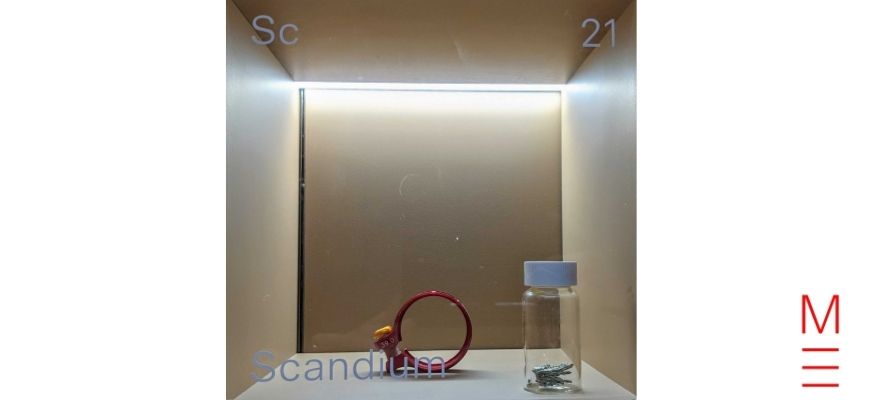
William Gregor discovered titanium in 1791 when examining the mineral ilmenite. He concluded that it contained iron oxide and a second oxide which he could not identify, and which he attributed to a new element that he named menachite. In 1795, Martin Heinrich Klaproth independently discovered titanium in the mineral rutile and named it after the Titans of Greek mythology. Klaproth, upon becoming aware of Gregor’s work, confirmed that he had discovered the same element.
The main use of titanium is as titanium dioxide, used as a white pigment in many applications including paint, toothpaste and sunscreen. Titanium alloys are also used in the aerospace industry as they are light, strong and durable.
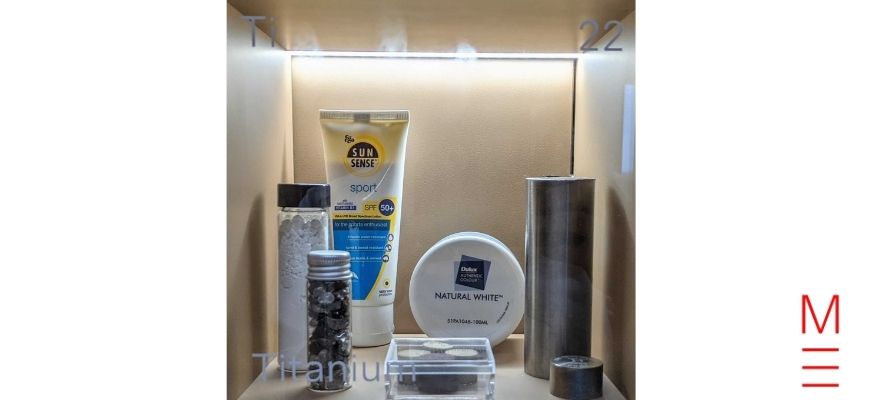
In 1801, Andres Manuel del Rio discovered vanadium in an ore called brown lead (now called vanadinite). He named the element panchromium (meaning all-colours in Greek) as it produced salts of many different colours. He then changed the name to erythronium (meaning red in Greek) as many vanadium salts turned red when heated. However, in 1805 it was claimed that del Rio had mistaken chromium for a new element, causing del Rio to retract his discovery. In 1831, vanadium was rediscovered by Nils Gabriel Sefstrom, and del Rio’s work was verified by Friedrich Wohler. Sefstrom named the element vanadium after the Norse goddess Vanadis, who amongst other things was the goddess of beauty, reflecting the range of beautiful colours of vanadium compounds, and because the symbol V was not in use. The name rionium, honouring del Rio, was also proposed but not adopted.
Vanadium is used in alloys to increase strength, most commonly in steels, and in lighter titanium alloys for the aerospace industry. Vanadium oxides are used as catalysts and as fixes for the dyeing of fabrics.
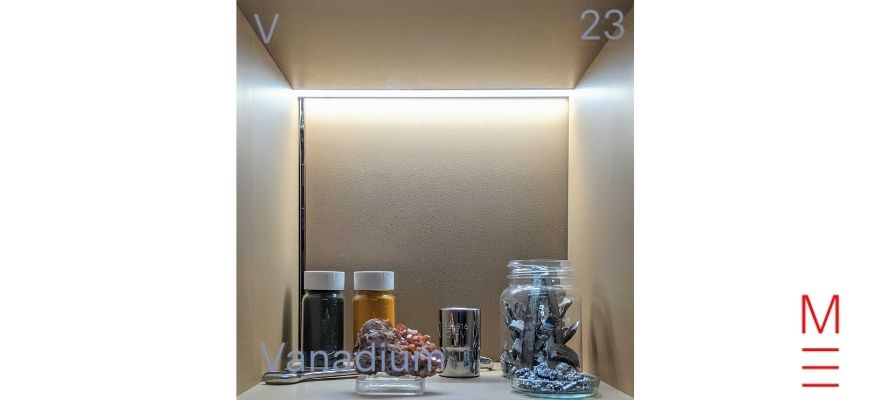
Chromium was first investigated as it produces coloured minerals, which were used as pigments. In 1761, Johan Gottlob Lehmann discovered an orange-red mineral he named siberian red lead (now called crocoite, which is lead chromate) which was used as a pigment in paints. In 1794, Louis Nicolas Vauquelin experimented with the pigment and showed that it contained a new element which he isolated in 1797. Chromium is named after the Greek word chroma, meaning colour, owing to the colourful compounds it forms.
The main use of chromium is in metallurgy, for chromium plating to produce a polished appearance and prevent corrosion, and for making stainless steel which is approximately 11% chromium. It is also used for pigments and gives colour to some gemstones, such as rubies and emeralds.
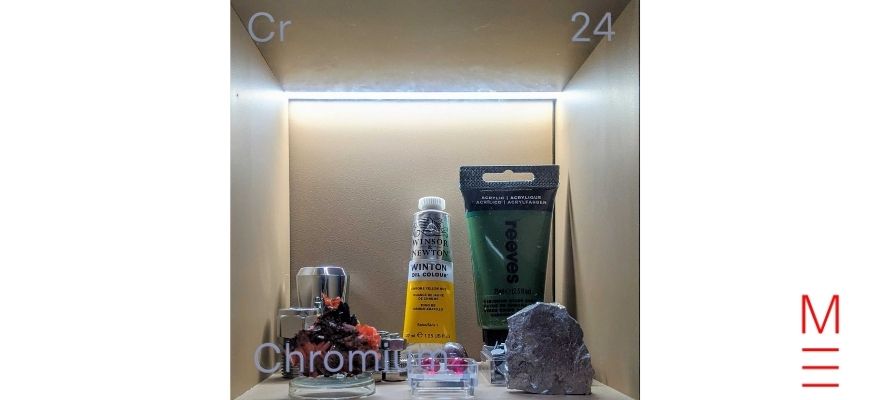
The manganese mineral pyrolusite (manganese dioxide, MnO2) was used since ancient times as a black pigment and in glass making. It was originally identified as the feminine magnes, named after Magnesia in Greece where it was found, to differentiate it from the masculine magnes, which is the iron mineral magnetite. Subsequently, it came to be known as magnesia, and then magnesia negra, to differentiate it from the white magnesia alba, which is magnesium oxide. Later still, the name became manganesum. In 1774, Carl Wilhelm Scheele used manganesum in the production of chlorine compounds and proposed the existence of a new element, which Johan Gottlieb Gahn isolated in the same year. The element was named manganese after the mineral.
The main use of manganese is in steel production, although other common uses are aluminum alloys for cans and alkali batteries.
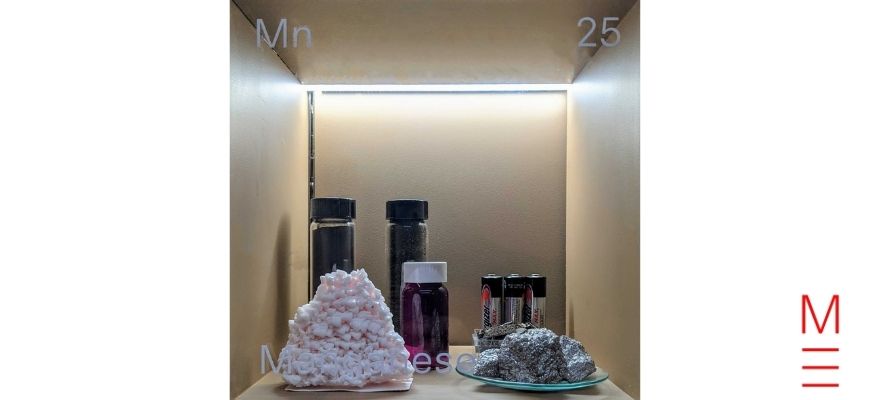
Iron is the fourth most common element in the Earth’s crust and was isolated from ores at the start of the Iron Age when, being stronger, it replaced copper alloys in the production of tools and weapons. Since then a variety of alloys such as steel and cast iron were developed for different uses. The English name iron derives from Germanic isarn, which possibly derives from the Proto-Indo-European isero associated with holy, powerful or strong, referring to its strength as a metal. The symbol Fe derives from the Latin name for the metal, ferrum.
Iron is the most widely used metal in the form of various types of steel to increase its hardness. It is used in many industries including construction, machinery, rail, automotive, aerospace and ship-buildings. In blood, iron is contained in haemoglobin.
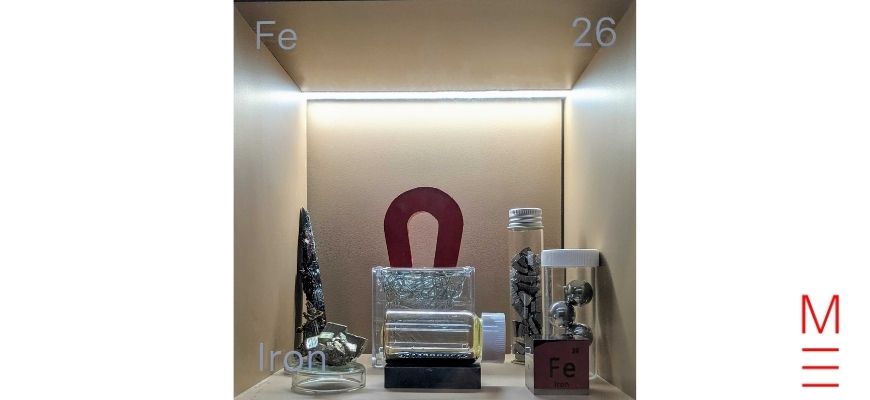
Blue-coloured cobalt compounds have been used since the Bronze Age as pigments or coloured glass. In the middle ages, German miners used the name kobold to refer to cobalt ore (the mineral cobaltite CoAsS) meaning house goblin, from kobe (hut) and holt (goblin). The negative connotation arose as the ore did not yield any known metals when smelted, but instead produced toxic arsenic oxide. There was some confusion as to whether the blue colour of cobalt pigments was due to the presence of bismuth, however around 1735, George Brandt showed that a new metal was responsible, which was named after the mineral.
Cobalt’s use in pigments and glass is surpassed by its use in alloys, for example, in the aerospace industry and for prosthetics. It is also used in lithium-ion and nickel metal hydride batteries, and is found in cobalamin (vitamin B12).
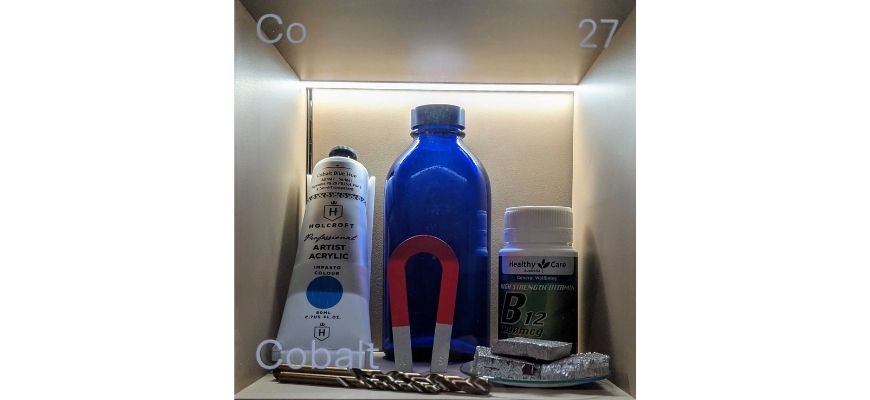
Nickel was used since ancient times, beginning in the Middle East in alloys with iron and later in China alloyed with copper, though its presence in the alloys was probably unknown. In the middle ages in Germany the mineral nickeline (NiAs) was discovered and mistaken for a copper mineral. The failure to extract copper from it was blamed on Nickel (a name used for a demon or the Devil) and the mineral was named kupfernickel, meaning copper-demon. In 1751, Baron Axel Fredrik Cronstedt successfully extracted a metal from kupfernickel, which he named nickel. The term kupfernickel now refers to cupronickel, a copper-nickel alloy.
Nickel is used predominantly in the production of stainless steel and other alloys such as nichrome used in heating elements, and cupronickel used in coins. Nickel is also used as plating as it protects from corrosion, and in rechargeable batteries.
Nickel cube and pieces, nickel-coated whistle, Canadian nickels made of 100% nickel, and Australian 50, 20 and 10 cent coins made of cupronickel (75% Cu, 25% Ni), nichrome (80% Ni, 20% Cr) wire from a heating element, alnico magnet (Fe, Al, Ni, Co alloy), nickel metal hydride rechargeable batteries and hydrated nickel sulfate NiSO4
Copper is found on Earth in its natural form, which led to it being used from prehistoric times, around 8000 BC. It is ultimately named after Cyprus which was an important source of copper in the Roman era. The Greek word for Cyprus Kyprios became aes cyprium (meaning metal from Cyprus) and then cuprum in Latin. The element symbol Cu is an abbreviation of cuprum.
There are many uses of copper, including as a conductor for heat and electricity, and as an alloy for jewellery, coins, hardware and building materials.
Copper bar, circuit boards, pipe, pipe fittings, nails, wire and tape; various high copper-content coins including Australian pennies, 1 and 2 cent count, and $1 and $2 coins; shattuckite plancheite Cu5(SiO5)4(OH)2 CuSi8O22(OH)4·H20; and various copper salts – copper(II) carbonate CuCO3, copper acetate Cu(CH3COO)2, copper(II) oxide CuO, copper sulfate CuSO4, copper(I) oxide Cu2O
Zinc was used since ancient times, alloyed with copper to make brass. The origin of the name is unclear, and is likely to be the German word Zinke meaning prong or tooth, as metallic zinc crystals have a prong-like appearance.
The main uses of zinc are for galvanization to protect other metals from corrosion, and for making alloys like brass.
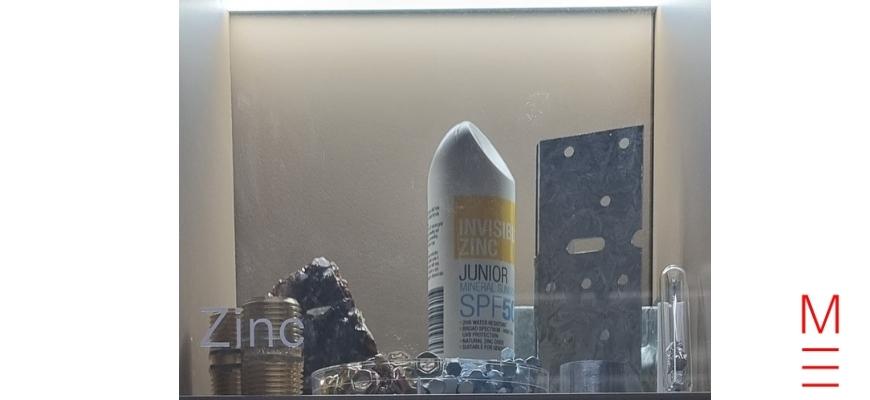
In 1787, Carl Axel Arrhenius believed he had discovered a new tungsten mineral near the Swedish village of Ytterby, which he named ytterbite. In 1789, Johan Gadolin discovered a new oxide in ytterbite, and in 1797, Anders Gustaf Ekeberg confirmed his discovery and named the oxide yttria. It was inferred that a new oxide must contain a new element, which was named yttrium following the convention where the oxide had an -a suffix, and the metal an -ium suffix. The symbol Yt was originally used, but was replaced by Y. It was subsequently realised that yttria was not an oxide of yttrium but a mineral containing other elements, and it was renamed gadolinite after Gadolin.
Yttrium compounds doped with other elements are used as light sources – in the phosphors of CRT televisions (now obsolete), in fluorescent light bulbs, LED lights, and lasers. Yttrium is also used in high-temperature superconductors.
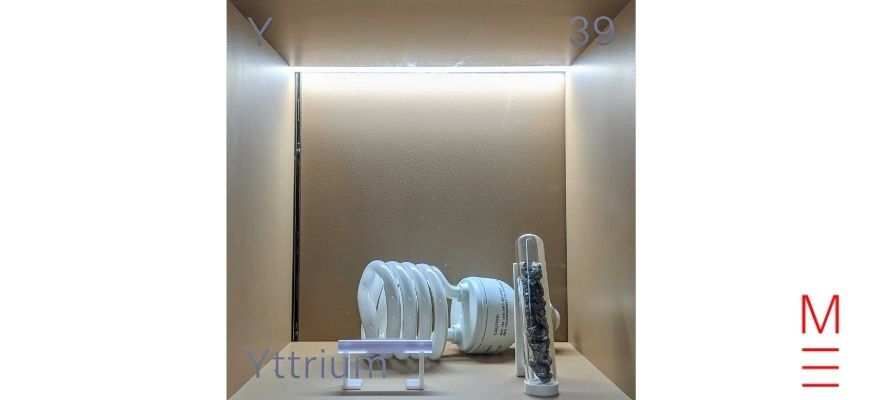
A variety of zirconium-containing minerals were known since ancient times, however, zirconium was only discovered as an element in 1789 by Martin Heinrich Klaproth. He named the element zirkonerde after the mineral zircon (ZrSiO4), which in turn derives its name from the Persian word zargun describing the gold-like appearance of the mineral.
Zirconium is used mostly as zircon or zirconia (ZrO2) for high-temperature ceramics and furnaces.
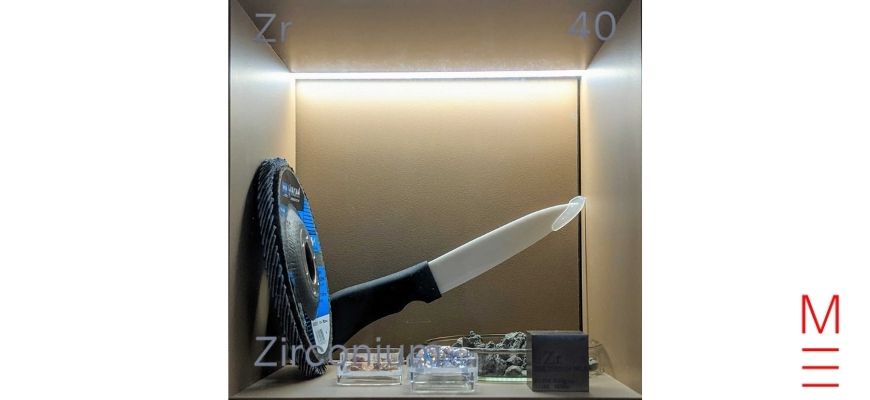
In 1801, Charles Hatchett discovered a new element in a mineral sample from Connecticut. He named the mineral columbite, and the element colombium, Cb, after Columbia, the personification of the United States, reflecting the origin of the mineral. Subsequently, in 1809, William Hyde Wollaston proposed that columbium was not a new element but was in fact tantalum. In 1846, Heinrich Rose proposed that tantalite, a tantalum mineral, contained more elements in addition to tantalum with similar properties which he named after the children of Tantalus in Greek mythology: niobium (after his daughter Niobe) and pelopium (after his son Pelops). Several more elements, ilmenium and dianium, were also proposed. Over the next 20 years, scientists showed that there were only two distinct elements: tantalum and niobium, and that niobium had already been discovered – it was columbium. The other three proposed elements turned out to be mixtures of tantalum and niobium. The name niobium was used in Europe whilst columbium was used in the US, until niobium became the official name of the element in 1949.
Niobium is mostly used in alloys such as structural steel, and in other specific applications such as gas pipelines and in the aerospace industry.
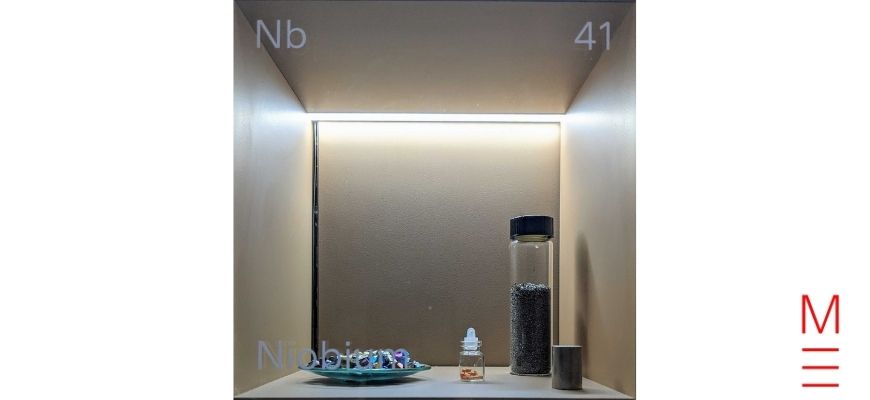
The molybdenum mineral molybdenite (MoS2, previously called molybdena) was known and used since ancient times but was confused with graphite, which was itself believed to be a type of lead. When it was differentiated from graphite it was mistaken for the lead mineral galena (PbS). In 1778 Carl Wilhelm Scheele concluded that molybdena differed from both graphite and galena, and that it must be the ore of a new element which he named molybdenum. The word molybdenum derives from the Greek molybdos meaning lead, and reflects the historical confusion.
Molybdenum is mostly used in different types of steel, used in construction and hardware.
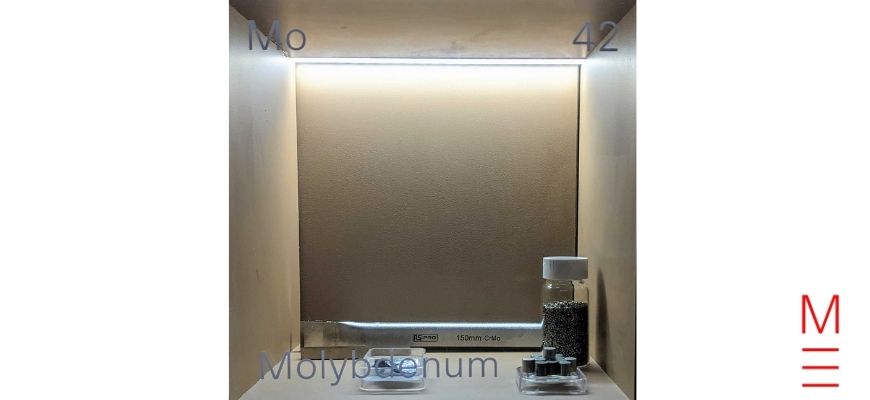
Technetium is the lightest element with no stable isotopes and as such is not naturally found on Earth (other than in extremely small quantities as an intermediate decay product of other unstable radioisotopes). Its existence was predicted by Dmitri Mendeleev who named it ekamanganese (Em) however its extreme scarcity made it extremely difficult to discover. There were many candidates and many different names given to this element between 1828 and 1908, all of which turned out to be errors: the supposed polinium was in fact iridium, ilmenium and pelopium were niobium-tantalum alloys, davyum was an iridium-rhodium-iron alloy, lucium was actually yttrium, and nipponium was actually rhenium. A 1925 claim of its discovery (named as masurium) could not be replicated and it is unclear if the result was correct. The recognised discovery was made in 1937 by Carlo Perrier and Emilio Segre who isolated the element from the molybdenum parts of a cyclotron. The parts had become radioactive through the operation of the cyclotron and produced the new element through the decay of radioactive molybdenum. The name panormium was proposed (after the Latin name for Palermo in Sicily where they worked) however the element was named technetium after the Greek technitos meaning artificial or crafted, reflecting its production. The most stable isotopes (97 and 98) have half-lives of around 4 million years.
The most common use of technetium is in medical diagnostic scans, of which approximately 10 million are performed each year. The technetium-99m isotope is obtained through the decay of molybdenum-99, which is extracted from nuclear fuel rods as a product of uranium fission.
Ruthenium occurs naturally as a platinum alloy in Russia and the Americas, and was used as such before its discovery. In 1807, Jedrzej Sniadecki claimed to have isolated this element and named it vestium after the asteroid Vesta, however, this discovery was not confirmed, and he withdrew his claim. In 1827, Jons Berzelius and Gottfried Osann disagreed on the results of an experiment that may have led to its discovery – Berzelius claimed that no new elements were discovered, whereas Osann claimed three new elements were discovered and named them pluranium, ruthenium and polinium, however, he was unable to replicate his results and also withdrew his claim. In 1844, Karl Ernst Claus showed that Osann’s samples did indeed contain this element, and was able to isolate it from residues left over from the minting of platinum rubles. Claus gave it the name ruthenium, after Ruthenia, a Latin word for Rus, referring to the area of western Russia/eastern Europe. Claus chose this name because he was from Russia, whereas Osann, who was from Germany, had originally proposed the name in reference to the Russian origin of the platinum he used.
Ruthenium is used in electronics to increase the durability of electrical contacts and electrodes, to make certain types of resistors, and in hard disc drives. It is also used as a catalyst.
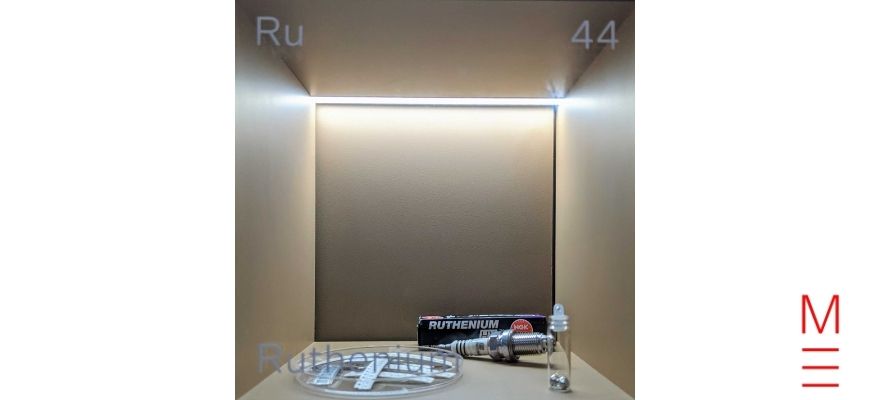
Rhodium was discovered in 1803 by William Hyde Wollaston when working with platinum ore. Through a series of metal-acid and precipitation reactions, he isolated two metals that had different chemical properties, palladium and a new metal. In one of the precipitation steps he formed hydrated Na3[RhCl6] which had a rose-red colour, and from which he was able to extract the new metal. He named the metal rhodium after the Greek rhodon, meaning rose.
Rhodium is used in catalytic converters that convert harmful gases from car exhausts into less harmful gases. It is also used to plate jewelry and in high temperature thermocouples.
Rhodium metal
Rhodium plated samples for jewellery
Mini catalytic convertor, containing a Pt/Pd/Rh catalyst
In 1802, William Hyde Wollaston discovered palladium when experimenting with platinum and named it after the asteroid Pallas which had been recently discovered, itself taking on one of the names of the Greek goddess Athena. He made the discovery by dissolving platinum in aqua regia and was able to identify and isolate palladium from what remained after the platinum had been removed through precipitation. Instead of announcing his discovery, he anonymously published the metal’s properties and made samples available for sale. Richard Chevenix, a chemist, challenged the discovery and claimed that palladium was a platinum-mercury alloy. Wollaston then anonymously challenged people to produce the alloy and offered a reward. In 1805, Wollaston announced that he had in fact discovered palladium.
Palladium’s main use is in catalytic converters that convert harmful gases from car exhausts into less harmful gases. It is also used in jewellery, and specific applications like hydrogen fuel cells. Palladium bullion is traded as a commodity.
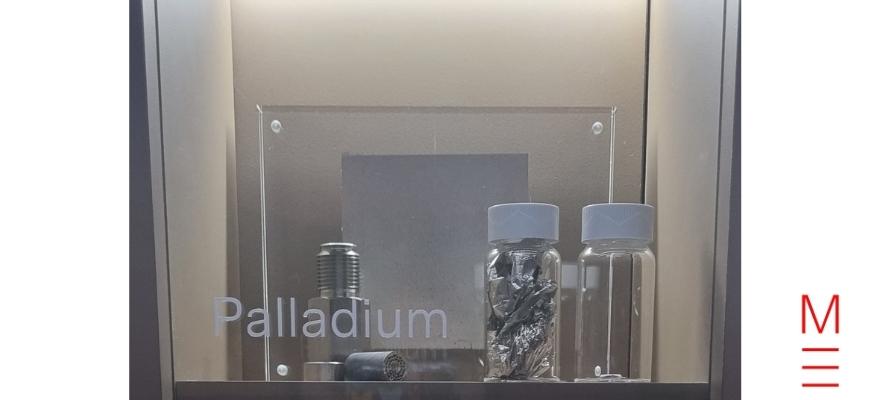
Silver can occur in pure form in the Earth’s crust and as such was known since prehistoric times. It was extracted from ore as early as the 4th millennium BC in Greece, and silver coins became common in ancient Greece and Rome, as did the use of silver in other applications. Its name derives from the Proto-Germanic silabur which referred to the metal itself and possibly money made of silver. The symbol Ag refers to the Latin and Greek names, argentum and argyros respectively, which derive from Proto-Indo-European words meaning shiny or white metal.
Silver is used for jewellery, cutlery and other silverware and decorative items. Photosensitive silver chemicals are used in photographic film, and silver iodide is used for cloud seeding to cause rain. Silver has the lowest electrical resistivity of all metals and is used in various electronics applications. It is also used for making mirrors, as a food additive, and in medical applications to prevent infections. Its use in currency is all but phased out, but silver bullion is traded as a commodity.
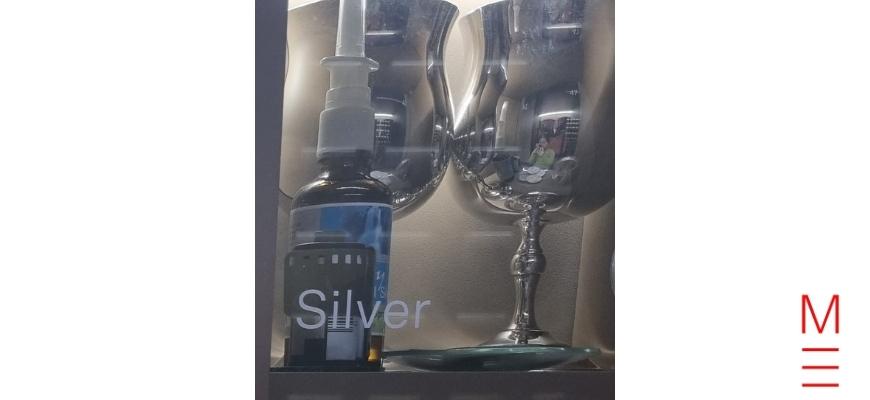
Cadmium was discovered in 1817 independently by Friedrich Stromeyer and Karl Samuel Leberecht Hermann, as an impurity in the mineral calamine (zinc carbonate). It was named after kadmeia, meaning calamine in Greek, after Kadmos the mythological founder of the city of Thebes, which was an ancient source of the mineral.
Cadmium forms colourful pigments used in paints. It was also used in rechargeable nickel cadmium batteries but its use is generally being phased out due to the toxicity of its compounds. Remaining uses are in solar panels, corrosion resistant coatings and as control rods in nuclear reactors.
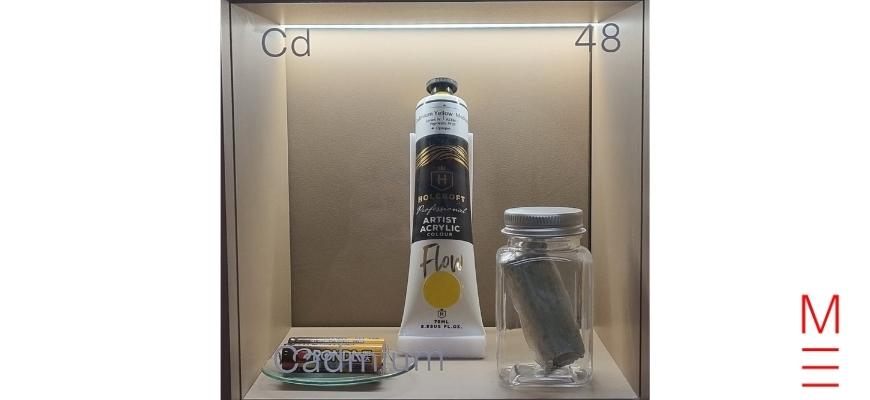
Whilst Dmitiri Mendeleev predicted the existence of element 72 in 1871, he mistakenly proposed that lanthanum was element 72. Henry Moseley was able to measure the atomic number of various elements using X-ray spectroscopy and showed that element 72 was yet to be discovered. In 1914, Georges Urbain claimed that he had discovered element 72 in 1907, which he named celtium, however, this was rejected on the basis of X-ray spectroscopy. In 1922 Urbain re-asserted his claim but was again rejected after Dirk Coster and George de Hevesy discovered the element as an impurity in the mineral zircon (ZrSiO4) using X-ray spectroscopy. They named it hafnium after the Latin name, Hafnia, of Copenhagen, where their discovery was made. Hafnium was the last element with stable isotopes to be discovered.
The main application of hafnium is in control rods for nuclear reactors. Other niche applications in aerospace parts and electronics also exist.
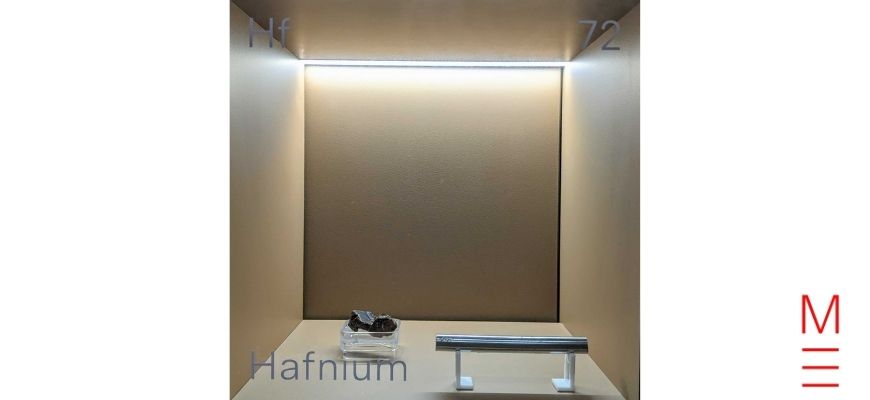
Anders Eckberg discovered tantalum in 1802, however its identity was questioned for the next 40 years as some scientists believed tantalum was in fact niobium (then called columbium) which had been discovered in 1801. Heinrich Rose eventually showed that tantalum and niobium were distinct elements (and also proposed a third distinct element, pelopium, which turned out to be a tantalum-niobium alloy). Eckberg named tantalum after Tantalus from Greek Mythology. After his death (as punishment for trying to feed his son to the gods), Tantalus was condemned to standing beneath fruit trees in a pool of water. The trees would rise when he reached for their fruit, so he could never eat, and the water would recede when he reached for it, so he could never drink. Thus he would spend eternity being hungry and thirst, with the fruit and water forever tantalising him. Eckberg apparently drew an analogy between this and tantalum’s ability to be immersed in acid without reacting.
Tantalum is used to make capacitors for electronics, as it provides a size and weight advantage over other materials. It is also used in high-performance alloys such as chemical processing equipment, jet engine components and implants.
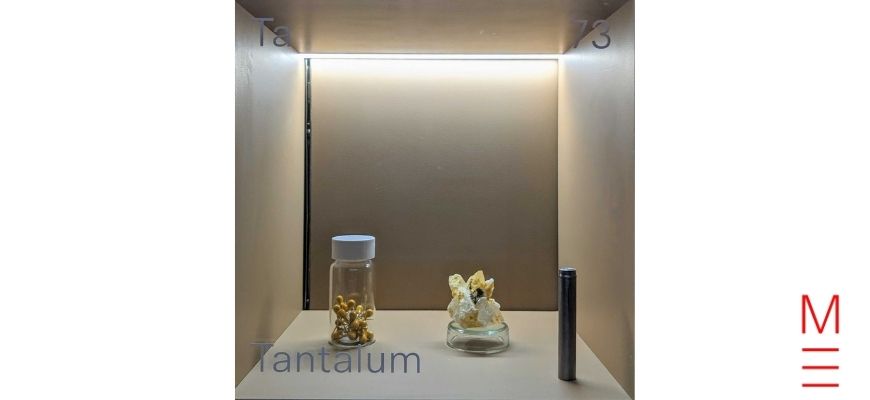
The element tungsten was predicted to exist around 1781 when Carl Wilhelm Scheele discovered tungstic acid when studying a mineral then called tungsten (CaWO4). In 1783, Juan Jose and Fausto Elhuyar showed that tungstic acid was identical to acid made from another mineral, wolframite ((Fe,Mn)WO4). They isolated the new element from this acid and named it wolfram (or volfram) after the mineral. The name tungsten originally referred to the mineral and means heavy stone in Swedish. It was adopted as the name of the metal in some languages (including English) due to Scheele’s work, and the mineral was renamed scheelite. Wolfram is used in other languages and is responsible for the chemical symbol W. The name is an obscure reference to tin ore producing less tin when it contained wolframite (since the wolframite contains no tin), and the supposedly missing tin having been devoured by the wolframite like a wolf devours sheep.
Tungsten is used to make hard materials like tungsten carbide, used in applications such as abrasives, cutting tools and ammunition. It has the highest melting point of all metals, leading to high-temperature applications such as incandescent light bulb filaments.
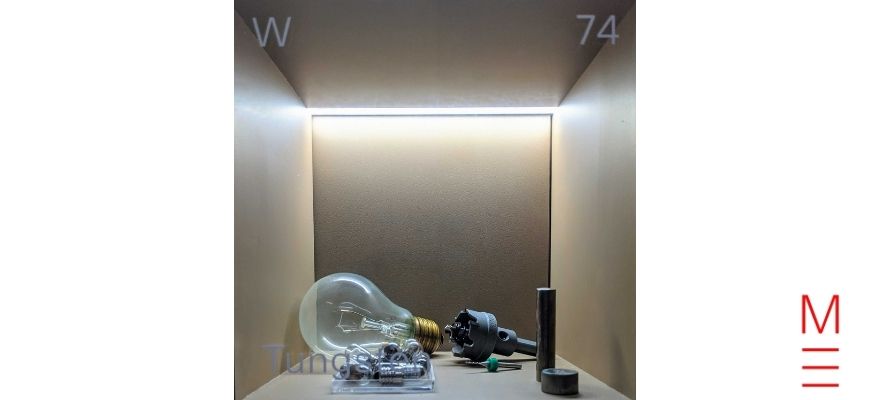
Elements 43 and 75 were predicted to exist by Dmitri Mendeleev who named them eka-manganese and dvi-manganese, both sitting beneath manganese in the periodic table. Masataka Ogawa discovered a new element in 1908 in the mineral thorianite using spectroscopy and named it nipponiun with the symbol Np (Nippon meaning Japan in Japanese). Ogawa believed he had discovered element 43 so this discovery was overlooked, but more recent analysis of his work showed he had in fact discovered element 75. In 1925, Walter Noddack, Ida Noddack, and Otto Berg (re)discovered element 75 in several minerals and named it rhenium after the Rhine river, spelled Rhein in German.
Rhenium is extremely rare and has few applications, including in high-performance alloys for jet engine parts and in catalysis. It was previously used in flash lamps but was replaced by lower cost metals.
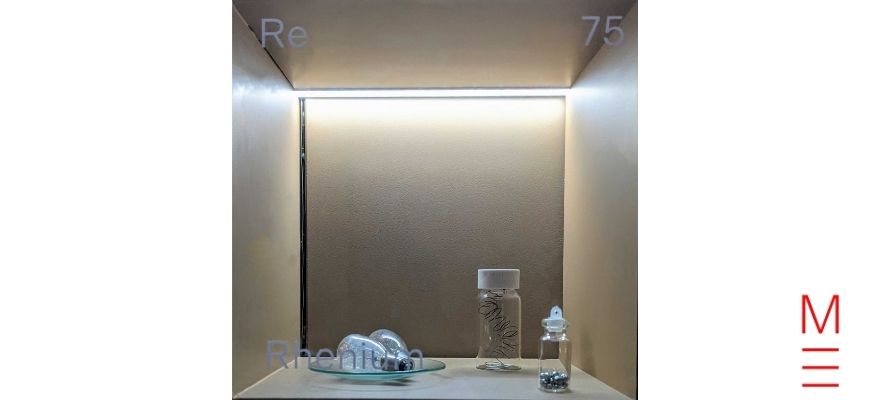
Osmium was discovered by Smithson Tennant in 1803, along with iridium. When platinum was dissolved in acid, an insoluble residue would form. By experimenting with this residue, Tennant was able to form osmium tetroxide, and inferred the existence of a new element. He chose the name osmium from the Greek osme meaning smell, as osmium tetroxide is volatile at room temperature and has a smoky smell.
Pure osmium has few uses as it is rare and forms a volatile and toxic oxide. The most common (though still rare) use is as a coating to form hard-wearing surfaces.
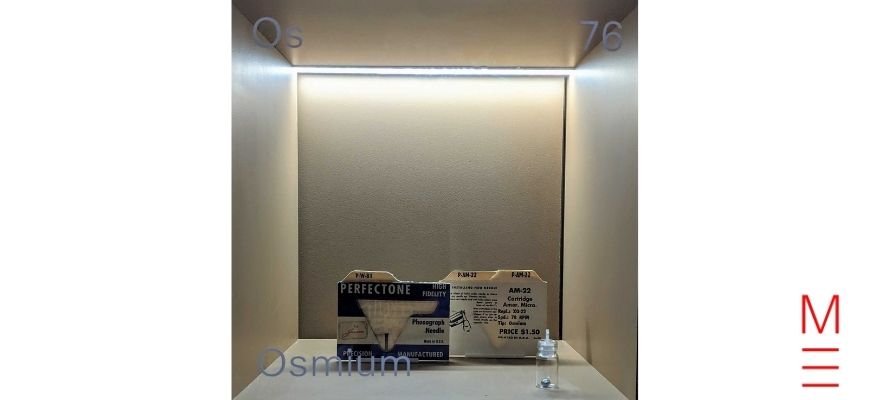
Iridium was discovered by Smithson Tennant in 1803, along with osmium. When platinum was dissolved in acid, an insoluble residue would form. By experimenting with this residue Tennant was able to form a red crystalline material, which he attributed to a new element. He named the element iridium after Iris, the Greek goddess of the rainbow (Iris or Irida in Greek) as iridium formed colourful compounds. Iridium is the rarest metal in the Earth’s crust.
Iridium has a high melting point and is hard and inert. As such its main applications are in electrical contacts, high-temperature crucibles and spark plugs.

Platinum was (perhaps unknowingly) used by the ancient Egyptians in gold alloys and was used more extensively in South America. When the Spanish arrived in South America, platinum was purposely discarded as the use of gold-platinum alloys was made illegal. The metal was believed to be an inferior form of silver and called platina in Spanish, the diminutive of plata meaning silver. In the 1730s, Antonio de Ulloa visited platinum mines in Colombia and Peru and took platinum samples to Spain. He showed that platinum could not be separated into any other metals and is credited with identifying it as an element. The English name comes from the Spanish platina, however in some languages it is referred to as white gold.
The main uses of platinum are catalysis, particularly in catalytic converters in cars, jewelry, and electronics. Platinum bullion is traded as a commodity.
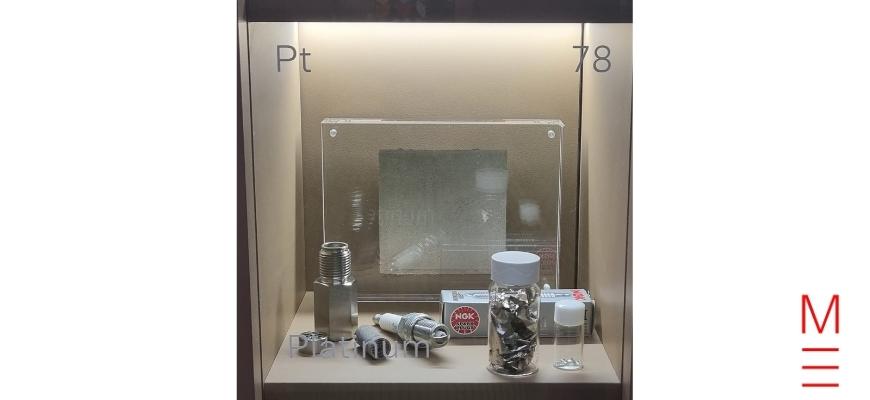
Gold is found in metallic form on Earth and as a result has been used since the paleolithic period, as early as 40,000 BC. It was more extensively mined and processed as early as the 5th millennium BC in Egypt and came to be used for coinage, jewellery and other such items throughout the ancient world. The name derives from an earlier Germanic name ghultan, whilst the symbol Au comes from the Latin name aurum. The Germanic and Latin names originate from different Proto-Indo-European words, both describing gold’s shiny appearance.
Gold is used in jewellery, in electrical contacts and as a corrosion-resistant coating. Gold bullion is traded as a commodity. Historically, gold coins were used for currency and the value of different currencies was defined by the value of gold, however, these were decoupled in the second half of the 20th century and only bullion or collectable coins are now produced.
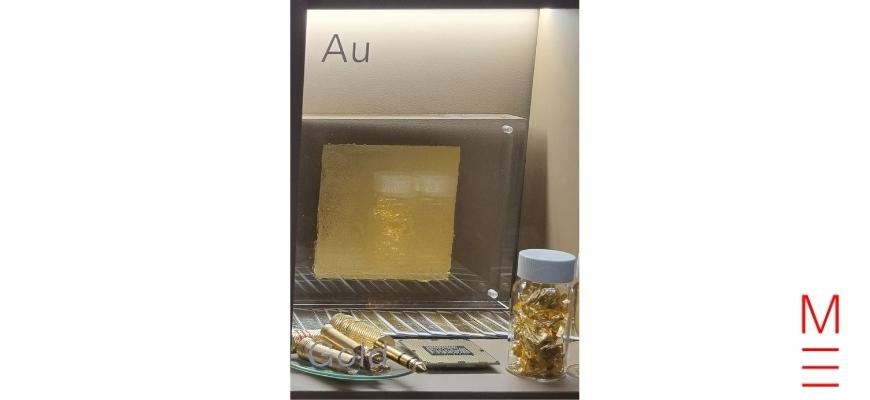
Mercury was isolated from the mineral cinnabar (HgS) and used since ancient times, with the earliest evidence of its use attributed to the Ancient Egyptians. In Ancient China, it was used to promote good health, although it is toxic. Cinnabar itself was also used as a red pigment since ancient times. The Greek name hydrargyros was used for the metal, meaning water-silver, and resulted in the chemical symbol Hg. The sentiment was adopted into English in the name quicksilver. The name mercury came into use in medieval times when alchemists associated the few then-known metals with the planets. The choice reflects the liquid metal’s mobility, as the planet Mercury is named after the Roman god Mercury, who was the messenger of the gods.
The main common use of mercury is as vapour in fluorescent lamps and UV lamps. Mercury was widely used in thermometers, pressure gauges, switches, amalgams for tooth fillings, and other medical applications, but is being phased out due to its toxicity.
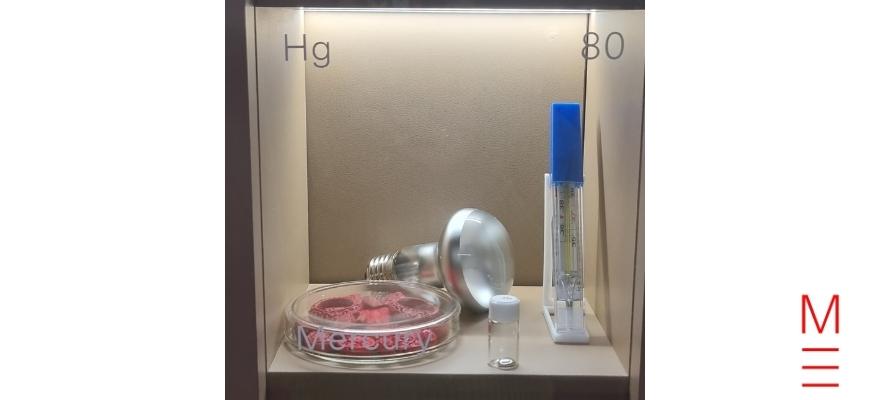
The Joint Institute for Nuclear Research in Dubna claimed to have synthesised element 104 in 1964 by bombarding plutonium with neon. They proposed the name kurchatovium, after Igor Kurchatov, the recently-deceased director of the Soviet atomic bomb project. The Lawrence Berkeley National Laboratory made the same claim in 1969, by bombarding californium with carbon. They proposed the name rutherfordium after Ernest Rutherford, who had discovered the nucleus.
In 1992 IUPAC recognised both groups as co-discoverers but a dispute about the name ensued. IUPAC proposed meitnerium and dubnium, but, in the end, adopted the name rutherfordium.
Rutherfordium has no applications as it is extremely expensive and difficult to produce and is highly unstable.
The Joint Institute for Nuclear Research in Dubna claimed to have synthesised element 105 in 1968 by bombarding americium with neon. In 1970 the Lawrence Berkeley National Laboratory made the same claim after bombarding californium with nitrogen. The Dubna group reported further results in 1970.
The Dubna team proposed the name nielsbohrium (Ns), in recognition of Neils Bohr’s contribution to atomic theory, while the Berkeley team proposed hahnium (Ha) after nuclear chemist Otto Hahn. In 1993 IUPAC announced that only the 1970 results would be recognised and named both groups as co-discoverers. IUPAC proposed the names kurchatovium and joliotium (Jl) after Irene Joliot-Curie, but in the end named the element dubnium after Dubna in Russia, where the Joint Institute for Nuclear Research is located.
Dubnium has no applications as it is extremely expensive and difficult to produce and is highly unstable.
The Joint Institute for Nuclear Research in Dubna claimed to have synthesised element 106 in 1974 by bombarding lead with chromium. Also in 1974, the Lawrence Berkeley National Laboratory made the same claim after bombarding californium with oxygen.
In 1993, IUPAC announced that the Dubna results were insufficient, and the Berkeley team alone would be recognised for the discovery. Glenn Seaborg of the Berkeley team intended the name kurchatovium in honour of the Dubna team, however, this was withdrawn due to ongoing disputes about the discovery and naming of the heavy elements. The name seaborgium, after Glenn Seaborg, was proposed by other members of the Berkeley team to recognise his work in heavy element synthesis but was rejected by IUPAC as Seaborg was still alive. IUPAC suggested rutherfordium, but denying the discoverer’s naming rights led to objections and the name seaborgium was recognised in 1997.
Seaborgium has no applications as it is extremely expensive and difficult to produce and is highly unstable.
The Joint Institute for Nuclear Research in Dubna claimed to have synthesised element 107 in 1976 by bombarding lead and bismuth with chromium and manganese. In 1981 the GSI Institute for Heavy Ion Research in Darmstadt also made the claim. They bombarded bismuth with chromium to make five atoms of element 107 and reconciled all their decay products. IUPAC recognised the Darmstadt group as the discoverers in 1992 as their results were more convincing.
The Darmstadt group proposed the name nielsbohrium after Niels Bohr, to recognise his work on atomic theory, and the Dubna group supported the name (they had previously proposed it for element 105). IUPAC objected to using a person’s full name for the element and adopted bohrium instead in 1997, despite objections that it sounded like boron.
Bohrium has no applications as it is extremely expensive and difficult to produce and is highly unstable.
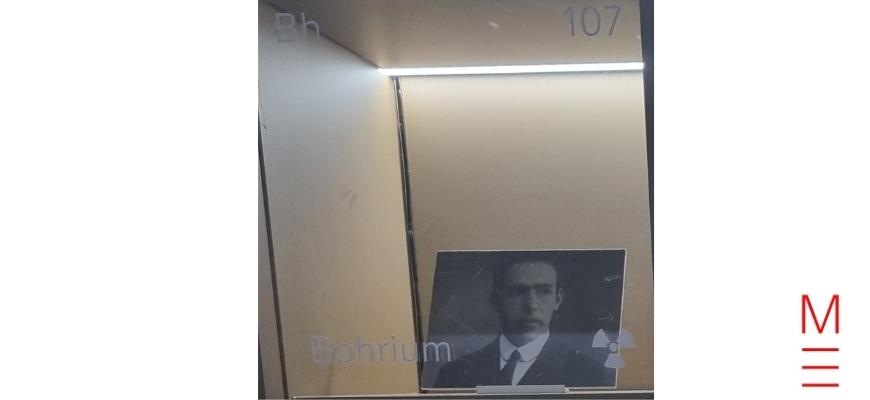
The Joint Institute for Nuclear Research in Dubna made several claims regarding the synthesis of element 108 between 1978 and 1984 using various combinations of targets and bombarding ions. Also in 1984 the GSI Institute for Heavy Ion Research in Darmstadt bombarded lead with iron and reported the creation of three atoms of element 108.
In 1993 IUPAC announced that the 1984 Darmstadt result was the most convincing and would be recognised as the discovery. The Darmstadt group proposed the name hassium, after the Latin name Hassia of the German state of Hesse, where Darmstadt is located. IUPAC rejected the name and proposed hahnium instead, after nuclear chemist Otto Hahn, but there were objections to denying the discoverers their naming rights. The name hassium was adopted in 1997.
Hassium has no applications as it is extremely expensive and difficult to produce and is highly unstable.
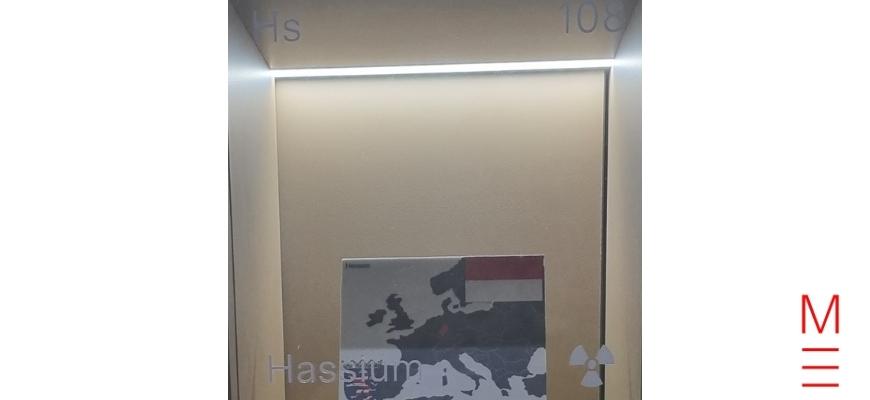
In 1984 the GSI Institute for Heavy Ion Research in Darmstadt bombarded bismuth with iron and detected one atom of element 109. They proposed the named meitnerium to honour physicist Lise Mietner and her role in the discovery of protactinium and nuclear fission. The name was officially adopted in 1997.
Meitnerium has no applications as it is extremely expensive and difficult to produce and is highly unstable.
In 1994 the GSI Institute for Heavy Ion Research in Darmstadt bombarded lead with nickel and detected one atom of element 110, and a further nine atoms were detected through their decay products. This followed earlier claims from the Joint Institute for Nuclear Research in Dubna, and the Lawrence Berkeley National Laboratory, both of which were deemed inconclusive.
The Darmstadt team considered several names: including wixhausium after the suburb Wixhausen where they were located, and policium as a joke as the emergency number in Germany is 110. In the end, they proposed darmstadtium after the city of Darmstadt. The Dubna team proposed becquerelium after Henri Becquerel, who had discovered radioactivity, and the Berkeley team proposed hahnium, after Otto Hahn (which they had failed to get accepted for other elements). Darmstadtium was accepted in 2003.
Darmstadtium has no applications as it is extremely expensive and difficult to produce and is highly unstable.
The GSI Institute for Heavy Ion Research in Darmstadt bombarded bismuth with nickel and detected three atoms of element 111 in 1994. They proposed the name roentgenium in honour of Wilhelm Roentgen, who discovered X-rays. The name was accepted by IUPAC in 2004.
Roentgenium has no applications as it is extremely expensive and difficult to produce and is highly unstable.
In 1996, the GSI Institute for Heavy Ion Research in Darmstadt bombarded lead with zinc and detected one atom of element 112. Another atom was synthesised in 2000. In 2001 and 2003, IUPAC ruled that results were insufficient for the discovery to be recognised. The Darmstadt group conducted further studies between 2001 and 2005 which clarified their earlier results. In 2009 IUPAC considered this additional work and experiments from the Riken lab in Japan and recognised the Darmstadt team for the discovery.
The Darmstadt team proposed the name copernicium, after astronomer Nicolaus Copernicus, with symbol Cp. IUPAC supported the name but rejected Cp as the symbol as it had previously been associated with cassiopium, a rejected rival name for lutetium. The name and symbol Cn were adopted by IUPAC in 2010 on the day of Copernicus’ birthday.
Copernicium has no applications as it is extremely expensive and difficult to produce and is highly unstable.
Matrix+ will give you access to HSC Chemistry Experts, wherever you are! Learn more.
Start HSC Chemistry confidently
Expert teachers, comprehensive resources, one-to-one help! Learn from home with Matrix+ online.
© Matrix Education and www.matrix.edu.au, 2025. Unauthorised use and/or duplication of this material without express and written permission from this site’s author and/or owner is strictly prohibited. Excerpts and links may be used, provided that full and clear credit is given to Matrix Education and www.matrix.edu.au with appropriate and specific direction to the original content.